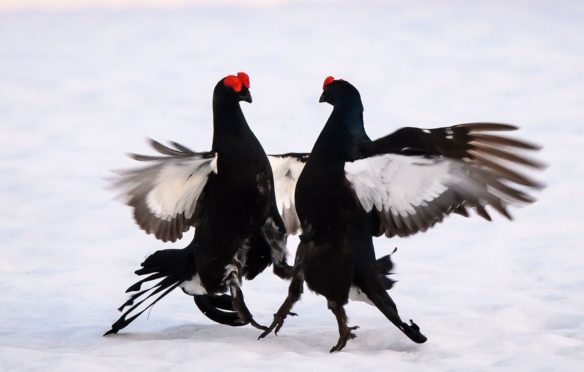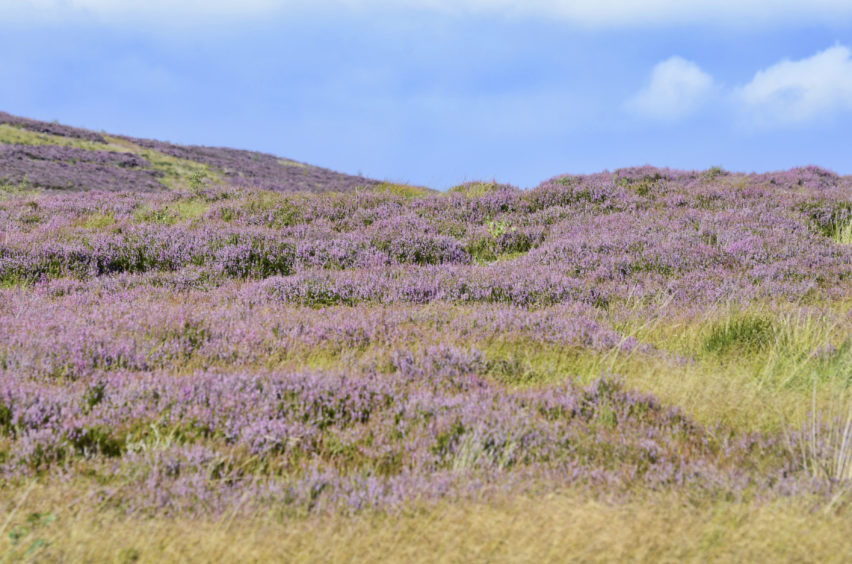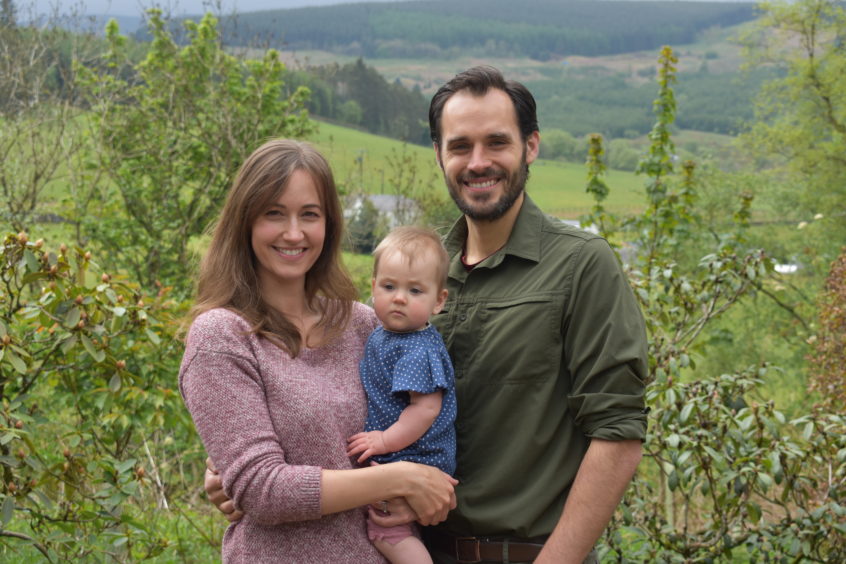
It is a hidden gem; a wild place protected by law where hen harriers court on the wing, merlin and short-eared owl hunt and black grouse strut their stuff.
Langholm Moor, in the Southern Uplands, is home to some of Scotland’s most iconic wildlife and has a natural and cultural heritage of which locals are proud.
For 250 years, they have been riding out on horseback, marking its boundaries in the Common Riding. Said to be the oldest equestrian event in the world, it is a spectacular tradition that continues today.
Now the community has a chance to buy the land they love and turn it into the Tarras Valley nature reserve.
The ambitious scheme aims to protect the moor, enabling it to flourish for future generations. It could also help turn the tide of climate change along with the fortunes of an ailing textile town.
But the 10,500-acre moor, owned by Buccleuch Estates, does not come cheap. The community buyout will cost more than £6 million – £3m of which is being sought from crowdfunding. As the race to close the deal gains pace, we find out what makes Langholm Moor so precious.
Buccleuch announced its intention last year to sell off 25,000 acres of its land. It gave the buyout body 14 days to demonstrate community support for the plan. Within 10 days, 833 people signed a petition in favour of the bid.
There were also letters of support from groups including Langholm Common Riding, Scottish Natural Heritage, Forestry and Land Scotland, Scotland’s Regeneration Forum and Community Land Scotland whose policy director Calum MacLeod praised Buccleuch Estates for its proactive engagement in the process.
He said: “This is a really important development in terms of demonstrating how community ownership can provide a real stimulus for a renewal and sustainability of local community and landscape spaces. Trusting the community to do that should be something we should be encouraging even more throughout Scotland.”
The buyout body says the community fears that if another party purchases the land, forests could be planted or wind farms erected on the section that borders a Site of Special Scientific Interest.
It is now discussing backing from the South of Scotland Enterprise Agency, and has applied for £3 million from the Scottish Land Fund.
So far it has received £100,000 from the John Muir Trust, taking its total to £137,000.
Buccleuch Estates confirmed it has had discussions with the Langholm Initiative and had made progress but milestones outwith its control had to be passed before a deal could be completed.
The habitat
Dr Chris Miles, chairman of the Southern Upland Partnership, was previously manager for Scottish Natural Heritage, and he rates Langholm Moor, with its 250-plus species of plants, a natural treasure.
But he says it is the area’s diversity that sets it aside.
“Langholm Moor’s geology and location make it fairly complex and it’s this complexity that leads to diversity,” said Dr Miles. “Its hilltops are broad and rounded with peat bogs that are host to their own range of plants like cotton grass, cloudberry, bog ashpodel, and sundews.
“The sides of the hills are steep and rocky with crags. They support habitats for ferns, one of the less common is green spleenwort.
“The moor is cut into by some significant watercourses, like the Tarras Water. This broad valley has remnant native woodland of mostly of birch and willow, but also unusual things such as aspen.”
He explained how calcium carbonate in boulder clay enriches the springs and flushes that emerge on the hillsides creating green areas where unusual plants can be found. “There are also nice populations of grass-of-Parnassus, as well as marsh valerian, which is relatively uncommon.”
They and other plants such as northern marsh orchid and the common spotted orchid are indicators of a “good, wetter habitat”.
Dr Miles said: “The buyout is an exciting proposal as those behind it would have nature as the driving purpose for its management. We are in an era where we are worried about our loss of important wildlife sites.
“We have to do something about it as a society.”
The wildlife
According to Duncan Orr-Ewing, RSPB Scotland’s head of species & land management, Langholm Moor has more rare hen harriers than the whole of England.
He said: “More than 1% of the UK population (around 500) is on Langholm Moor. It has as many breeding pairs as the whole of England.
“There are about seven pairs at present and the figure has been as high as the mid-20s.
“The Moor has been designated a Site of Special Scientific Interest because of its moorland breeding bird population, so there are other birds like black grouse, golden plover, curlew and various wading birds.
“The SSSI is because of the assemblage of birds, the collection of types of all the species that occur.
“In much of the Uplands the heather moorland habitat has largely disappeared because of commercial afforestation and overgrazing.
“Heather is the main food plant for species like red grouse and the main nesting habitat for birds like the hen harrier. But it is also endangered because of human persecution.”
He added: “Sadly, those species that occur at Langholm are declining on a national scale. We want to see them maintained.
“Everything the buyout team are proposing sounds sympathetic and what we would do. We hope they get backing to buy the moor.”
The buyout
Kevin Cumming, the man leading the buyout bid, works for the Langholm Initiative. He runs its Wild Eskdale project providing outdoor education and promoting eco-tourism.
Kevin, 34, who lives on the edge of Langholm with his wife Ellen, 32, and their seven-month-old daughter Freya said: “The experiences of Langholm Moor are unique.
“In a single day you can stand under a sky of spectacular courting hen harriers, witness the silent hunt of a short-eared
owl or be mesmerised by the intimate lekking of black grouse.
“This is a special place. But during the eight months I’ve been leading the working group to investigate the community, we have seen the devastation caused by the Australian wildfires and the global impact of Covid-19.
“That is why this buyout is important; it’s a project of vision and hope when we need it, and it is a project for our future.
“We need to concentrate on this for our children and the generations that come after. The Langholm Initiative is proposing we undertake climate action, wildlife conservation, ecological restoration and community regeneration all built around a central goal – creating the Tarras Valley Nature Reserve.
“We will carry out peatland restoration, new native woodland creation, ancient woodland regeneration and protect and enhance the incredible flora and fauna that lives here.”
The project plans to block drains allowing raised bogs to return and new peat to be created, locking in carbon and increasing biodiversity.
New woodland would also help carbon capture. And the buyout would create sustainable, responsible eco-tourism, with commercial spin-offs.
He said: “By taking Langholm Moor under community ownership, we can demonstrate how individuals united in a common purpose can perform something truly amazing.”

Enjoy the convenience of having The Sunday Post delivered as a digital ePaper straight to your smartphone, tablet or computer.
Subscribe for only £5.49 a month and enjoy all the benefits of the printed paper as a digital replica.
Subscribe © Tom Hutton
© Tom Hutton